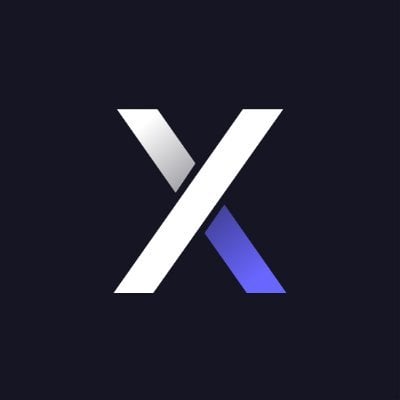DYDX Research Report: When September V4 Meets December Unlocking, Should We Pay Attention or Stay Away?
Original link: 《DYDX: Teaching an Old Dog New Tricks》
Written by: OUROBOROS CAPITAL
Compiled by: Shenchao TechFlow
Our bullish view on DYDX is based on the following points:
1) After v4, more people will buy DYDX tokens as potential validators accumulate spot tokens to earn transaction fees accrued after v4;
2) With the implementation of decentralization in v4, product innovation will significantly increase.
Additionally, we believe the following factors will drive fee growth in the long term:
i) The ability of validators to capture MEV;
ii) Broader adoption of new features such as prediction markets and account abstraction;
iii) Panic sentiment in centralized exchanges will drive DEX growth.
Introduction
DYDX v4 will launch sometime at the end of September. This update will fundamentally change the token economic model and further drive the product's market adaptability.
DYDX launched in 2021, making waves in the market with its massive trading volume, even surpassing Coinbase at one point. At that time, trading volume was primarily driven by incentives, and there were quite a few wash trades to obtain those incentives. Today, the situation is entirely different, with DYDX being a leading decentralized exchange for perpetual contracts, capturing about 60% market share (with fees often exceeding incentives).
As more perpetual contracts move from off-chain to on-chain trading, we expect DYDX to continue to perform well, with higher fees, better user experience, and potentially becoming a complete derivatives platform, including options, prediction markets, and more.
What is v4?
In short, v4 is the process of dYdX migrating to its own chain built on the Cosmos SDK. v4 was first announced in January 2022, followed by detailed information about the dYdX chain released in June 2022.
Previously, fees were not accumulated for token holders but were distributed to equity holders, effectively rendering the token a useless governance token. v4 and the dYdX chain will allow fees to belong to token holders, meaning we can view v4 as the introduction of a fee switch for token holders.
Investment Thesis 1: Annualized Yield for DYDX Holders After v4 is Approximately 20%
There are multiple signs indicating that DYDX tokens will accumulate 100% of fees after v4.



Based on the current DYDX fees ($50 million ------ annualized fees over the past 30 days), we estimate that from day one, the staking yield for validators will be at least 15% (assuming all circulating DYDX is staked), but more likely closer to 20% (assuming the staking ratio of tokens is similar to other high-fee growth tokens like SNX, GMX, and CVX). Additionally, we believe this fee amount is an estimate during a trading volume low and expect trading volume to rise when speculative demand returns. Currently, the trading volume of decentralized exchanges for perpetual contracts is about 30% of the historical peak (February 2022). Nevertheless, considering that the penetration rate of decentralized exchanges for perpetual contracts is now higher and may further increase against the backdrop of growing panic sentiment in centralized exchanges, we believe it is reasonable to assume that annualized fees in a rising market could reach $100 million (or even higher).



Investment Thesis 2: Decentralization Will Bring Innovation
We believe that the decentralization of DYDX has the potential to unlock new verticals that were previously difficult to enter due to regulatory barriers, such as prediction markets, options, and synthetic products. This was also mentioned in the recent DYDX presentation at the Nebular Summit.

Investment Thesis 3: Bullish Unlocking
The unlocking of investor tokens was originally planned for early 2023 but was later postponed. We clearly see that the timing of v4 has synchronized with the unlocking time to ensure that new supply balances with the demand brought by the improved token economic model.

Myth-Busting
This section addresses what we believe are common misconceptions about DYDX.
Misconception 1: There will be a massive unlocking in December, and tokens may be sold off
The biggest concern regarding the token is the upcoming unlocking in December. The unlocking in December will increase the token supply by 80%, followed by another 80% increase a year later. However, we believe the concerns here are exaggerated; in fact, the team has a strong incentive to ensure that the tokens are well supported at the time of unlocking, supporting our bullish view.
Of the 150 million DYDX tokens unlocking on December 1, 2023, 30% belong to "employees and advisors." We have seen precedents for this situation, as previous unlocks have been delayed to better synchronize with the delayed timing of v4; it is likely to ensure a good intersection between token supply and demand after value accumulation.
Notably, among the "employees and advisors" tokens, 70% will not be fully unlocked until June 1, 2024, and 90% will be fully unlocked by June 1, 2025, allowing more time for better alignment of interests for token holders.



Misconception 2: DYDX's trading volume is not real; market makers wash trade extensively to obtain trading/liquidity provider rewards
A common criticism is that market makers engage in extensive wash trading to obtain trading/liquidity provider rewards. While in the past, the value of dYdX tokens given to traders and liquidity providers was higher than the fees, this is no longer the case.
In fact, we have observed that trading/liquidity provider rewards have gradually decreased while fees/trading volume have remained stable. Additionally, the protocol has intentionally worked through several governance proposals to reduce token rewards for traders and liquidity providers, but this has not led to a decrease in trading volume.
The table below highlights the trend of DYDX's net profit margin (fees minus issuance) this year, which reached breakeven in the latest month. We expect that after reducing liquidity provider rewards in DIP-24, it will trend back toward profitability.

Misconception 3: Perp DEX fees are expensive
Our comparison of DYDX's fees with those of centralized exchanges indicates that DYDX's fees are already competitive and thus not affected by fee compression. In fact, we believe that considering the DYDX tokens as trading/liquidity provider rewards, the fees could be considered low.

Catalyst 1: Losses in centralized exchanges equal gains in decentralized exchanges (DEX)
From the FTX incident, we know that when CEXs are surrounded by panic sentiment, perpetual DEXs often gain market share, and token prices perform well. In the current context of increased regulation on CEXs, this is an additional catalyst, and we believe it could benefit dYdX, making it a good "hedge" in a portfolio during CEX panic scenarios.
Catalyst 2: Validator MEV in v4
A recently explored idea is that DYDX validators can earn MEV income on the exchange. We read Chorus One's in-depth report on DYDX validators extracting MEV and are convinced that "validators can increase their income by collaborating with trading firms to extract MEV," further enhancing the appeal of spot purchases to launch validator nodes.
Conclusion
We believe DYDX represents an opportunity for trading (short-term) and investment (long-term). In the short term, we expect v4 to trigger a "unlock rally" with the increase in token fees and the demand for validators to accumulate spot. In the long term, we also see it as a good core holding in a cryptocurrency portfolio, as it has strong fundamental market performance during cryptocurrency upcycles. In addition to the new products after v4 and the potential for perpetual DEX to gain market share from CEXs, it also benefits from the real value appreciation from the return of speculative trading volume in cryptocurrencies.











